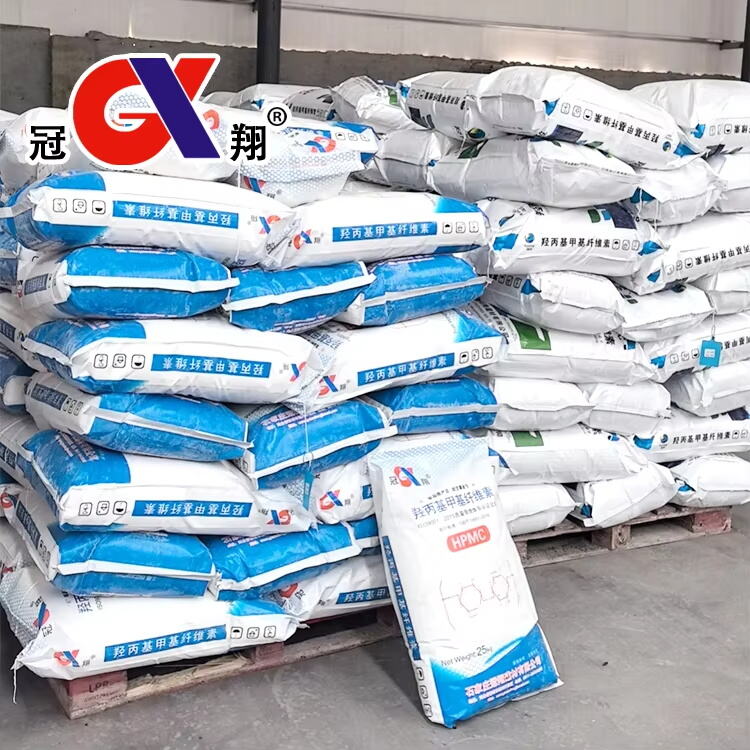Che cos' è la polvere di HPMC?
Definizione e composizione chimica
L'idrossipropil metilcellulosa, comunemente nota come HPMC, deriva dalla modificazione chimica della cellulosa naturale per potenziare ciò che la natura offre già. Cosa rende questa sostanza particolare? Beh, possiede un'elevata viscosità e forma facilmente gel, spiegando il motivo per cui viene utilizzata in settori che vanno dalla produzione di medicinali alla realizzazione di materiali da costruzione. La molecola stessa contiene sia componenti idrossipropilici che metilici derivati dalla cellulosa tradizionale. Ecco un aspetto interessante della sua struttura: può effettivamente modificare la propria solubilità a seconda che si tratti di acqua calda o fredda. Per chiunque lavori con l'HPMC, conoscere con precisione la composizione chimica è molto importante. Fattori come il livello di sostituzione e il peso molecolare non sono solo numeri su un foglio: influenzano direttamente le prestazioni dell'HPMC in condizioni differenti all'interno di vari settori industriali.
Panoramica del Processo Produttivo
La produzione di HPMC inizia combinando la cellulosa e sottoponendola a un processo di idrolisi alcalina, durante il quale le fibre di cellulosa si trasformano effettivamente in una sostanza più solubile. Dopo questo trattamento chimico, i produttori purificano la sostanza, la asciugano completamente e infine la trasformano in polvere attraverso tecniche di granulazione. La dimensione di queste particelle è molto importante, poiché influisce direttamente sulla viscosità o solubilità del prodotto finale quando viene utilizzato. I laboratori producono generalmente quantità minori per scopi di test, mentre le fabbriche gestiscono volumi molto più grandi; indipendentemente dalla scala, i produttori seguono comunque passaggi simili per garantire che il loro HPMC soddisfi le esigenze dei clienti per diverse applicazioni industriali.
Proprietà Principali della Polvere di HPMC
Caratteristiche di Ritenzione Idrica e Solubilità
La polvere di HPMC ha una notevole capacità di ritenzione idrica che mantiene l'umidità in una varietà di prodotti. Questa proprietà si distingue particolarmente in prodotti come malte da costruzione e alcuni alimenti, dove è fondamentale mantenere stabili i livelli di umidità. La solubilità effettiva dell'HPMC dipende da due fattori principali: il suo peso molecolare e l'equilibrio tra gruppi idrossipropilici e metilici nella formula. Queste caratteristiche determinano dove l'HPMC funziona meglio in diversi settori industriali, tra cui farmaceutico e alimentare. Comprendere come l'HPMC interagisce con l'acqua durante il processo è la chiave per ottenere formule efficaci. Alcune applicazioni richiedono un rapido rilascio dei componenti attivi, mentre altre traggono beneficio da un controllo prolungato dell'umidità, quindi conoscere queste dinamiche aiuta i produttori a realizzare prodotti corretti fin dalla prima volta.
Gelificazione Termica e Controllo della Viscosità
Quello che distingue la polvere di HPMC da molti altri materiali è il modo in cui forma un gel quando riscaldata, rendendola ideale sia come addensante che come agente gelificante per svariati utilizzi. Quando la temperatura circostante varia, questa particolare caratteristica consente all'HPMC di adattarsi sufficientemente bene per essere utilizzata in prodotti per la cura della pelle, alimenti o persino formulazioni farmaceutiche. Il controllo della fluidità o densità dell'HPMC dipende dalla quantità utilizzata e dalla temperatura alla quale è sottoposta. Grazie a questa flessibilità, i produttori fanno ampio affidamento sull'HPMC in diversi settori, come la produzione di farmaci, prodotti di bellezza e alimenti processati. Ottenere la giusta consistenza è fondamentale affinché i prodotti mantengano una struttura adeguata e garantiscano prestazioni uniformi, qualcosa che i clienti percepiscono, anche inconsapevolmente, durante l'utilizzo quotidiano di tali prodotti.
HPMC nelle Applicazioni Farmaceutiche
Legante per Compresse e Sistemi a Rilascio Controllato
L'idrossipropilmetilcellulosa, comunemente nota come HPMC, svolge un ruolo importante nel settore farmaceutico come componente chiave per il legante delle compresse. Ciò che la rende così preziosa è la sua capacità di mantenere unita la formula durante il processo di produzione, portando alla realizzazione di compresse meglio formulate e dal funzionamento affidabile. Quando utilizzata nelle formulazioni a rilascio controllato, questa sostanza aiuta a regolare la velocità con cui il medicinale viene rilasciato nell'organismo, mantenendo livelli terapeutici costanti durante l'arco della giornata. Ricerche condotte in numerosi trial clinici dimostrano che l'HPMC migliora effettivamente la quantità di farmaco che raggiunge il sito d'azione nel corpo, prolungando al contempo la stabilità del medicinale. Questi benefici sono rilevanti poiché influenzano direttamente l'aderenza dei pazienti alla terapia e l'efficacia effettiva dei trattamenti previsti.
Soluzioni oftalmiche e formulati topici
L'HPMC è diventato davvero importante nella cura degli occhi sia come lubrificante che come addensante, in particolare nelle gocce oculari utilizzate quotidianamente. Quello che lo contraddistingue è la sua sicurezza per gli occhi e la capacità di creare uno strato protettivo una volta applicato. Questo influisce positivamente sulla permanenza del farmaco sulla superficie dell'occhio. Studi dimostrano che quando si utilizza HPMC, i pazienti tendono ad avere un'esperienza molto migliore, poiché i loro occhi rimangono idratati per un periodo più lungo dopo l'applicazione delle gocce. Per le persone che necessitano di trattamenti regolari durante la giornata, questo effetto prolungato significa meno applicazioni e una maggiore comodità generale durante le sedute di trattamento.
Utilizzi dell'HPMC nell'industria alimentare
Agente ispessitore nelle salse e nei latticini Prodotti
L'HPMC è diventato piuttosto popolare come addensante nel settore alimentare, in particolare in prodotti come salse e derivati lattiero-caseari. Ciò che rende questo componente unico è la capacità di aggiungere corpo e densità riducendo al contempo le calorie, un aspetto che si adatta perfettamente alle esigenze dei consumatori attenti alla salute. Per i produttori di salse, ciò significa ottenere una consistenza uniforme senza il rischio di separazione nel tempo. Quando viene aggiunto anche a prodotti lattiero-caseari, l'HPMC migliora la sensazione in bocca e l'esperienza complessiva del consumo, un aspetto molto importante per i produttori. Alcune ricerche indicano benefici come la prevenzione della separazione degli ingredienti e il prolungamento della durata dei prodotti sugli scaffali. Queste caratteristiche spiegano perché molte aziende fanno affidamento sull'HPMC per mantenere i propri prodotti alimentari attraenti e gustosi dal momento della produzione a quello del consumo.
Applicazioni nella Panificazione Senza Glutine
I prodotti senza glutine hanno visto un aumento massiccio di popolarità negli ultimi tempi, rendendo l'HPMC un ingrediente indispensabile per molte ricette senza glutine. Fondamentalmente, l'HPMC svolge la funzione che normalmente è coperta dal glutine nella panificazione tradizionale. Senza glutine, gli impasti tendono ad essere secchi e sbriciolosi, ma l'HPMC conferisce elasticità e permette ai prodotti da forno di mantenere la loro forma corretta. Ai panificatori piace molto anche la sua capacità di trattenere l'umidità, così i dolci non si sgonfiano una volta usciti dal forno. Studi dimostrano che quando si aggiunge l'HPMC, le persone in realtà apprezzano di più il consumo di pane e pasticceria senza glutine, poiché hanno un sapore migliore e una sensazione meno gommosa in bocca. Per le panetterie commerciali che desiderano entrare in questo segmento di mercato in crescita, utilizzare l'HPMC non è solo vantaggioso, ma sta diventando essenziale per poter competere con le panetterie tradizionali.

HPMC nelle formulazioni cosmetiche
Modifica della viscosità degli shampoo
L'idrossipropil metilcellulosa (HPMC) svolge un ruolo chiave in molte ricette di shampoo perché aiuta a controllare la densità o la leggerezza del prodotto. L'aspetto e la sensazione al tatto dello shampoo sono fattori determinanti per il giudizio dei consumatori sulla sua qualità complessiva. Variando la quantità di HPMC nella formulazione, i produttori possono ottenere diverse texture, che vanno da quelle degli shampoo con consistenza gel più densa fino alle versioni più fluide e leggere che si versano facilmente. Questa flessibilità consente alle aziende di creare prodotti adatti a differenti tipi di clienti, che cercano caratteristiche specifiche di sensazione al tatto. Le ricerche sulle preferenze dei consumatori dimostrano costantemente che i prodotti più densi tendono ad essere percepiti come più qualitativamente elevati. Per questo motivo, i formulisti esperti tengono sempre conto dell'HPMC tra gli ingredienti disponibili per creare shampoo che si distinguano rispetto alla concorrenza sugli scaffali dei negozi.
Proprietà Filmogene del Idratante
Per quanto riguarda le creme idratanti, l'HPMC agisce da filmogeno e aumenta realmente l'idratazione della pelle. Funziona formando una sorta di barriera sulla superficie cutanea che trattiene l'umidità dove deve rimanere. Le creme idratanti che contengono HPMC tendono ad essere più efficaci, poiché mantengono la pelle idratata per periodi molto più lunghi rispetto ai prodotti che non includono questo ingrediente. Un altro vantaggio dell'HPMC nei prodotti per la cura della pelle è il modo in cui influisce sulla sensazione del prodotto durante l'applicazione. Molte persone notano che le formulazioni con HPMC si stendono in modo uniforme e non lasciano residui oleosi, spesso associati alle creme idratanti a base di oli. Per chi cerca qualcosa di leggero ma comunque efficace, questa caratteristica è molto importante. Studi effettuati da dermatologi confermano ciò che molti utenti già sanno: questi filmogeni sintetici migliorano effettivamente l'efficacia delle creme idratanti nel tempo e, in generale, rendono l'esperienza quotidiana di applicazione molto più piacevole. Per questo motivo, molte aziende cosmetiche stanno iniziando ad utilizzare l'HPMC nelle loro formulazioni.
Miglioramenti nei Materiali da Costruzione
Ritenzione d'Acqua nella Malta Cementizia
L'idrossipropilmetilcellulosa (HPMC) fa una grande differenza per quanto riguarda la capacità delle malte cementizie di trattenere l'acqua, un fattore che influisce notevolmente sulla facilità di utilizzo in cantiere. Quando miscelata nella malta, l'HPMC mantiene il giusto livello di umidità durante l'applicazione, evitando che la miscela si asciughi troppo rapidamente. Questo comporta una riduzione delle crepe successive e una maggiore durata complessiva del prodotto finito. È interessante notare che questa capacità di trattenere l'acqua non fa solo migliorare la qualità strutturale, ma in realtà permette di risparmiare acqua a lungo termine, poiché se ne deve aggiungere meno durante la miscelazione. Le ricerche più recenti effettuate da associazioni sui materiali da costruzione evidenziano chiaramente i vantaggi che derivano dall'uso dell'HPMC nelle formule del cemento. Questi additivi aiutano a risparmiare risorse senza compromettere la resistenza o l'aspetto estetico della costruzione finale, risultando quindi una scelta da considerare per chiunque voglia migliorare sia la qualità che la sostenibilità dei progetti edilizi.
Miglioramento delle Prestazioni degli Adesivi per Piastrelle
L'aggiunta di HPMC agli adesivi per piastrelle migliora davvero le loro prestazioni, conferendo una maggiore adesività e una necessaria flessibilità che permette alle piastrelle di durare più a lungo. Ciò che rende questa sostanza così utile è la sua capacità di aumentare la resistenza al taglio, il che significa che questi adesivi funzionano bene su tutti i tipi di superfici, sia ruvide che lisce. Abbiamo riscontrato questa efficacia anche in situazioni reali di costruzione. Per esempio, i professionisti che lavorano a ristrutturazioni di bagni riportano installazioni più rapide quando utilizzano prodotti modificati con HPMC e minori distacchi delle piastrelle dopo anni di utilizzo. Questi materiali funzionano semplicemente meglio in pratica. Col tempo, le piastrelle restano al loro posto senza creparsi né spostarsi, mantenendo il loro aspetto estetico e resistendo all'usura quotidiana. Per questo motivo, molti professionisti oggi considerano l'HPMC un ingrediente essenziale per lavori di posa di qualità.
Considerazioni ambientali e di sicurezza
Profilo di biodegradabilità
L'idrossipropilmetilcellulosa, comunemente nota come HPMC, si distingue perché si decompone naturalmente, rappresentando una scelta ecologica per le aziende che intendono ridurre la propria impronta di carbonio. Studi dimostrano che, in determinati ambienti, l'HPMC si degrada effettivamente nel tempo, a differenza di quelle sostanze sintetiche di tipo plastico che restano nell'ambiente causando problemi. Il fatto che possa essere degradata naturalmente spiega il motivo per cui molti produttori stanno includendo l'HPMC nei loro prodotti rispettosi dell'ambiente. E diciamocelo, oggi i clienti sono molto più attenti rispetto al passato riguardo all'origine dei prodotti che acquistano. Quindi, avere un materiale che scompare dopo l'utilizzo conferisce all'HPMC un vantaggio reale rispetto a quelle alternative chimiche tradizionali che continuano a rimanere nelle discariche da decenni.
Conformità Regolamentare in Diversi Settori
Per quanto riguarda le normative, l'HPMC soddisfa tutti i requisiti richiesti da importanti organizzazioni come la FDA e le autorità dell'Unione Europea. L'ingrediente è stato sottoposto a test approfonditi ed è stato approvato per l'utilizzo in molteplici ambiti della vita quotidiana, dagli alimenti ai farmaci che assumiamo, fino ai prodotti di bellezza che applichiamo. Per coloro che lavorano con formulazioni a base di HPMC, esiste in realtà una documentazione molto utile disponibile da parte di questi enti regolatori. Essa specifica esattamente quali livelli di concentrazione sono accettabili e fornisce valutazioni dettagliate sulla sicurezza, coerenti con le applicazioni pratiche. I produttori ritengono queste informazioni estremamente utili durante lo sviluppo di nuovi prodotti, poiché eliminano gran parte dell'incertezza legata ai problemi di conformità. Di conseguenza, l'HPMC continua a essere ampiamente utilizzato in diversi settori industriali dove il controllo della qualità e la sicurezza del consumatore rimangono priorità assolute.
Domande Frequenti
Quali sono le principali applicazioni della polvere di HPMC?
La polvere di HPMC viene utilizzata nell'industria farmaceutica, alimentare, cosmetica e nei materiali da costruzione principalmente per le sue proprietà di viscosità e ritenzione idrica.
Come migliora l'HPMC la panificazione senza glutine?
HPMC imita la rete glutinica, conferendo elasticità e volume agli impasti senza glutine, migliorando la texture e le caratteristiche sensoriali dei prodotti da forno.
L'HPMC è biodegradabile?
Sì, l'HPMC è biodegradabile in determinate condizioni, il che lo rende una scelta ecologica rispetto ad altri polimeri sintetici.
Perché l'HPMC viene utilizzato nei cosmetici?
L'HPMC viene utilizzato per le sue proprietà filmogene che migliorano l'idratazione della pelle e l'estetica del prodotto, offrendo una sensazione non grassa.
A quali normative HPMC risponde?
L'HPMC rispetta gli standard di sicurezza stabiliti dalla FDA e dall'Unione Europea, garantendo un'utilizzazione sicura in diversi settori, tra cui farmaceutico, alimentare e cosmetico.
 EN
EN
 AR
AR
 CS
CS
 DA
DA
 NL
NL
 FI
FI
 FR
FR
 DE
DE
 EL
EL
 HI
HI
 IT
IT
 JA
JA
 KO
KO
 NO
NO
 PL
PL
 PT
PT
 RO
RO
 RU
RU
 ES
ES
 SV
SV
 IW
IW
 ID
ID
 SR
SR
 SK
SK
 UK
UK
 VI
VI
 HU
HU
 TH
TH
 TR
TR
 AF
AF
 MS
MS
 CY
CY
 IS
IS
 BN
BN
 LO
LO
 LA
LA
 NE
NE
 MY
MY
 KK
KK
 UZ
UZ


